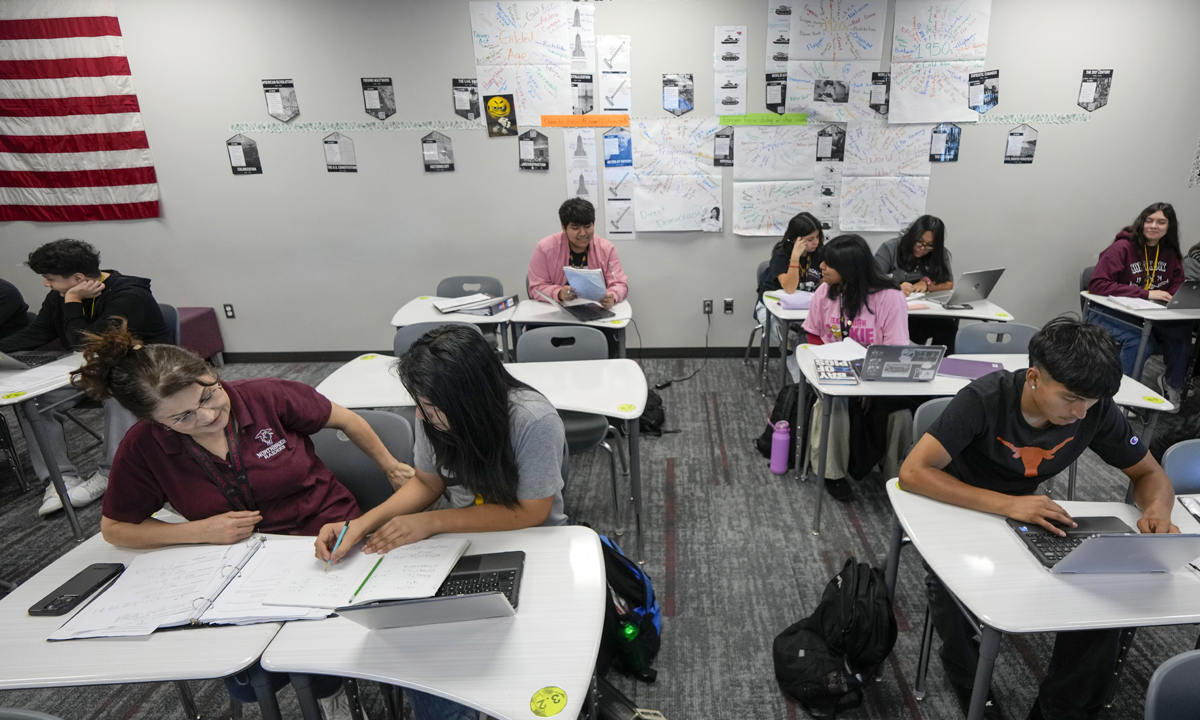In Algebra 1, New Understanding of an Old Problem Can Support Students
Charania and Rose: A study of data from 2,000 students highlights the best strategies for catching kids up and ensuring they pass this key subject.

Get stories like this delivered straight to your inbox. Sign up for The 74 Newsletter
Schools are often described as engines of opportunity — places where students gain the skills and knowledge needed to build their futures. But for too many young people, that engine stalls before it even starts.
One critical inflection point is the completion of Algebra I. It can determine whether students move forward or fall behind, shaping not just their academic trajectory but also their future economic mobility. For students who pass Algebra I — typically in 9th grade — a door opens to higher-level math, college readiness, and stronger career prospects. For those who don’t, that door can remain closed. In fact, students who fail Algebra I are four times more likely to drop out of high school than their peers who pass.
According to the 2024 NAEP scores, only 28% of students were proficient in 8th grade math. That sobering number underscores the challenge: Students are entering Algebra I already behind, grappling with unfinished learning from prior grades. Without effective intervention, the gap only grows wider.
To better understand how to support students in mastering Algebra I, TNTP and New Classrooms analyzed three years of data from more than 2,000 students who used Teach to One Roadmaps, an online learning platform developed by New Classrooms, alongside their regular Algebra I classroom.
The findings, detailed in the report, Unlocking Algebra: What the Data Tells Us About Helping Students Catch Up, offer important insights into how students build algebraic understanding over time and which strategies are most effective in helping them succeed.
The study found that students make the most progress when rebuilding foundational knowledge is paired with opportunities to learn new content. That requires focusing on high-leverage, pre-requisite skills rather than trying to fill every gap. Intervention supports like tutoring must be tightly aligned to what students already know and what they are ready to learn next. And instructional coherence is essential. Students need consistent, connected learning experiences — from core instruction to other interventions — to truly accelerate.
The majority of students in the study began knowing only about one-third of the algebra-related concepts and skills from prior grades. But the data also showed that students can catch up — especially when instruction helps them both rebuild key foundations and continue learning new, grade-level material. They don’t need to stop moving forward while trying to recover everything they’ve missed.
The research found that instruction was significantly more effective when it targeted the key predecessor skills that unlock access to new Algebra I content, rather than attempting to remediate everything. For example, when students are trying to learn “the average rate of change,” the key predecessor skills with the greatest likelihood of ensuring success are the ability to calculate the slope between two points, to construct functions to model a linear relationship, and to determine function rules from tables. When key skills like these are not already mastered, students were found to succeed in only one out of 10 attempts. But when they are explicitly addressed, students’ success rate jumped to 58%.
The takeaway: Students don’t need to catch up on all unfinished learning to move forward. Precision matters more than breadth. Instead of broad, generalized approaches, educators can accelerate learning by focusing on the skills that matter most for unlocking new content and that build on each student’s existing knowledge.
Over the course of a school year, aligning interventions with core instruction also made a measurable difference. This targeted strategy helped students learn nearly twice as many new algebra concepts by year end. That progress mattered: Students who had mastered twice as many concepts were significantly more likely to score proficient on their state’s Algebra I assessment.
These insights point to a larger truth: System-level instructional coherence is essential. Students thrive when their learning experiences—from core instruction to tutoring to other supports—are aligned, purposeful, and grounded in a shared understanding of what success looks like. In Algebra I, for example, instructional coherence ensures that the foundational skills students practice in tutoring or support programs directly connect to what’s being taught in class, so every learning opportunity builds toward mastering key algebra concepts rather than feeling disconnected or repetitive.
If schools are to serve as true engines of opportunity, all parts of the system—curriculum, instruction, and intervention—must work together. That’s especially true when it comes to Algebra I, the gateway course that often determines who accelerates and who stalls out. Coherence isn’t just about what happens in the math classroom; it requires alignment across grade levels, teacher teams, and entire systems.
When selecting intervention solutions, district leaders should ask key questions: How does the platform determine what each student is ready to learn? Does it tailor practice to individual needs? The most effective tools meet students where they are and guide them towards mastery, with a clear focus on skills that unlock Algebra I.
At the state level, much of the recent focus has rightly been on ensuring rigorous classroom curricula. But few states offer clear guidance on what high-quality intervention should look like. This is a missed opportunity. State leaders can leverage existing curriculum review processes to advocate for coherent intervention tools: ones that are aligned to classroom instruction, address unfinished learning, and build towards grade-level content.
Algebra I is more than just a math class. It’s a defining moment in a student’s academic life and a powerful measure of whether the school system is delivering on its promise of opportunity. Right now, too many students are stalling before they ever get a chance to accelerate. But we now have a clearer roadmap for helping them catch up—and keep up.
The tools are here. The knowledge is here. The opportunity is waiting. Let’s make sure the engine starts.
Get stories like these delivered straight to your inbox. Sign up for The 74 Newsletter

;)
